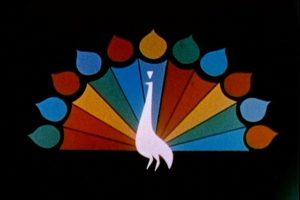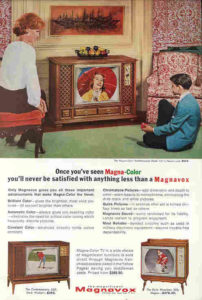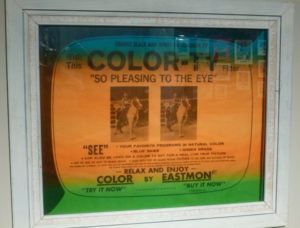
The 1950’s was the TV Age. When the decade began, most US households didn’t have televisions. Entertainment consisted of listening to the radio. By the end of the decade, the trend had reversed. Televisions were found in a majority of homes, and radio shows had gone the way of hand-cranked cars.
Televisions revolutionized households. Teenagers of ten years earlier listened to Fibber Magee and Molly on the radio. Now, they watched Wally and the Beav on the idiot box.
That was a pretty profound change. But the next big change was already in the air.
I remember the first time I saw HDTV. It was a golf tournament, and I was astounded to see every blade of grass, and the little dimples on the golf ball itself.
Regular television would never look good again. It was two long years of misery before I could finally afford my own HDTV.
The same feelings befell those who saw color television in the 50’s.

There wasn’t much color television to watch back then. NBC took the lead in providing color programming, but the local affiliates had to upgrade their own equipment before viewers across America could actually see color television shows.
But if the local station was broadcasting in color, a sure-fire way to see it was to drop into the local television store. They would have a color model in its full glory circa 1959.
And, of course, once you had seen the magical NBC Peacock in full color, black and white would never be the same.
But what was a black and white television owner of limited means to do? Easy. You dropped twenty bucks on a color filter that would magically give you a “color” television!

The filter was blue at the top, green at the bottom, and red in the middle. That meant that, at least in theory, grass would be green, the sky would be blue, and faces would be flesh-colored (if your flesh was as red as strawberry licorice).
After several hours, you would get used to it. Then, one day, you would take the plastic filter off and rediscover black and white television. By then, your painful memories of how gorgeous color television looked had likely faded to the point that good old crisp B&W looked watchable once again.
Now all you had to do was wait until 1967 or so, when color TV finally got affordable enough to purchase in its genuine incarnation.
And thrifty Boomers, if HDTV is still beyond your financial pain threshold, just pop a DVD into your computer. You’ll be getting full HD on your monitor.